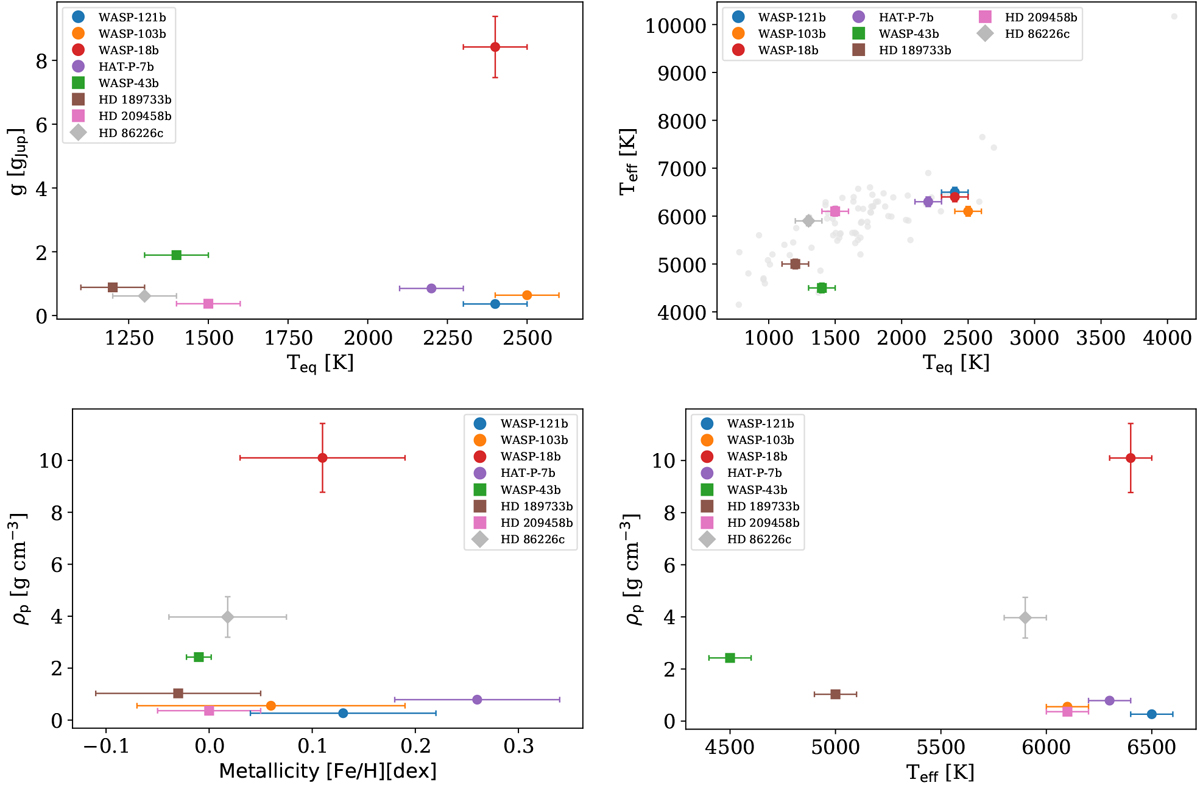Fig. 1

Relationship between selected system properties for hot giant Jupiters (WASP-43b, HD 189733b, HD 209458b) and ultra-hot Jupiters (HAT-P-7b, WASP-18b, WASP-103b, WASP-121b). The two classes of giant gas planets are clearly separated with respect to their global planetary temperature, Teq (K) and the planets’ surface gravity, g (gJup). There is not as clear a separation between the hot giant gas planets and ultra-hot Jupiters regarding their host star’s effective temperature, Teff (K), bulk planetary density ρp, and stellar metallicity [Fe/H]. The ultra-hot Jupiters are shown by circle markers, the giant-gas planets by the square markers and a sub-Neptune (HD 86226c) by the diamond marker. We also include the sample of hot and the ultra-hot Jupiters from Table 1 in Baxter et al. (2020) in the Teff versus Teq plot (top right) as smaller light grey points.
Current usage metrics show cumulative count of Article Views (full-text article views including HTML views, PDF and ePub downloads, according to the available data) and Abstracts Views on Vision4Press platform.
Data correspond to usage on the plateform after 2015. The current usage metrics is available 48-96 hours after online publication and is updated daily on week days.
Initial download of the metrics may take a while.


